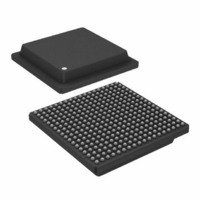AD6635BB Analog Devices Inc, AD6635BB Datasheet - Page 32

AD6635BB
Manufacturer Part Number
AD6635BB
Description
IC,RF/Baseband Circuit,CMOS,BGA,324PIN,PLASTIC
Manufacturer
Analog Devices Inc
Series
AD6635r
Datasheet
1.AD6635BBPCB.pdf
(60 pages)
Specifications of AD6635BB
Rohs Status
RoHS non-compliant
Rf Type
Cellular, CDMA2000, EDGE, GPRS, GSM
Number Of Mixers
1
Current - Supply
880mA
Voltage - Supply
3 V ~ 3.6 V
Package / Case
324-BGA
Frequency
-
Gain
-
Noise Figure
-
Secondary Attributes
-
Lead Free Status / RoHS Status
Available stocks
Company
Part Number
Manufacturer
Quantity
Price
Part Number:
AD6635BB
Manufacturer:
ADI/亚德诺
Quantity:
20 000
AD6635
INTERPOLATING HALF-BAND FILTERS
The AD6635 has four interpolating half-band FIR filters that
immediately precede the four digital AGCs and immediately
follow the RCF channel outputs. Each interpolating half-band
takes I and Q data from the preceding RCF and outputs I and
Q data to the AGC. The half-band filters and AGC operate
independently of each other, so the AGC can be bypassed, in
which case the output of the half-band filter is sent directly to
the output data port. The half-band filters also operate indepen-
dently of each other––any one can be enabled or disabled using
the Half-Band Control registers.
Half-band filters also perform the function of interleaving data
from various RCF channel outputs prior to the actual function
of interpolation. This interleaving of data is allowed even when
the actual function of the half-band filter is bypassed. This
feature allows for the usage of multiple channels (implementing
a polyphase filter) on the AD6635 to process a single carrier.
Either RCF phase decimation or a start holdoff counter for the
channels is used to appropriately phase the channels. For example,
if two channels of AD6635 are used to process one cdma2000
carrier, RCF filters for both channels should be 180∞ out of
phase. This can be done using RCF phase decimation or an
appropriate start holdoff counter followed by appropriate NCO
phase offsets.
Half-band filter A can listen to either Channels 0 to 3, Channels
0 and 1, or only Channel 0. Half-band filter B can listen to
Channels 2 and 3 or to only Channel 2. Each half-band filter
interleaves the channels specified in its control register. The
interleaved data so combined is interpolated by 2. The inter-
leaving function can be used independently of the interpolating
function, in which case the half-band filter is bypassed using the
Half-Band Control registers. When the half-band filter is bypassed,
the interleaving function is still performed. For one channel
running at twice the chip rate, the half-band can be used to
output channel data at 4¥ the chip rate.
In Figure 31, the frequency response of the interpolating half-band
FIR filter is shown in the graph with respect to the chip rate.
–10
–20
–30
–40
–50
–60
–70
–80
0
0
Figure 31. Interpolating Half-Band Filter
Frequency Response
0.5
FREQUENCY IN MULTIPLES OF CHIP RATE
1.0
1.5
2.0
2.5
3.0
3.5
f
f
SAMP
CHIP
4.0
–32–
The SNR of the interpolating half-band filter is approximately
149.6 dB. The highest error spurs due to fixed-point arithmetic
are around –172.9 dB. The coefficients of the 13-tap interpolat-
ing half-band FIR filter are given in the Table VII.
AUTOMATIC GAIN CONTROL
The AD6635 is equipped with four independent automatic gain
control (AGC) loops for direct interface with a RAKE receiver.
Each AGC circuit has 96 dB of range. It is important that the
decimating filters of the AD6635 preceding the AGC reject
undesired signals so that each AGC loop is operating on only
the carrier of interest, and carriers at other frequencies do not
affect the ranging of the loop.
The AGC compresses the 23-bit complex output from the inter-
polating half-band filter into a programmable word size of 4–8,
10, 12, or 16 bits. Since the small signals from the lower bits are
pushed into higher bits by adding gain, the clipping of the lower
bits does not compromise the SNR of the signal of interest. The
AGC maintains a constant mean power on the output despite
the level of the signal of interest, allowing operation in environ-
ments where the dynamic range of the signal exceeds the
dynamic range of the output resolution.
The AGC and the interpolation filters are not tied together, and
any one or both of them can be selected without the other. The
AGC section can be bypassed if desired by setting Bit 0 of the
AGC control word. When bypassed, the I/Q data is passed to
the output port after clipping to 16-bit I/Q data.
There are three sources of error introduced by the AGC func-
tion: underflow, overflow, and modulation. Underflow is caused
by truncation of bits below the output range. Overflow is caused
by clipping errors when the output signal exceeds the output
range. Modulation error occurs when the output gain varies
during the reception of a data.
The desired signal level should be set based on the probability
density function of the signal so that the errors due to underflow
and overflow are balanced. The gain and damping values of the
loop filter should be set so that the AGC is fast enough to track
long term amplitude variations of the signal that might cause exces-
sive underflow or overflow, but slow enough to avoid excessive loss
of amplitude information due to the modulation of the signal.
Table VII. Half-Band Coefficients
0
14
0
–66
0
309
512
309
0
–66
0
14
0
REV. 0













